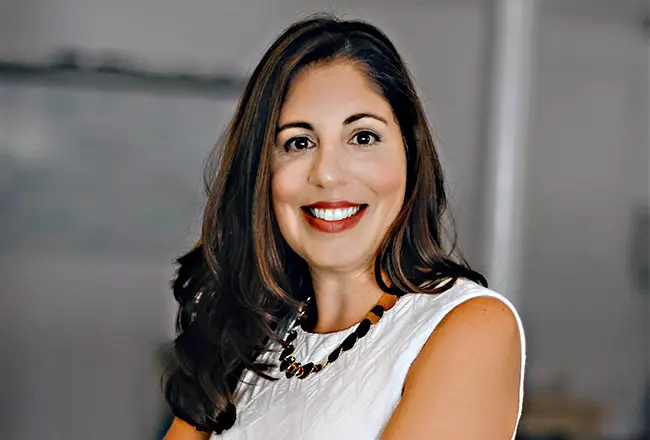 When I was a little girl, my grandfather taught us grandkids a rhyming song to make toiling away in his vast garden a bit more fun ”“ and to distract us from the labor that is weeding, raking and watering. Grandpa Angelo would merrily sing, “Inch by inch, row by row”¦ gonna make this garden grow”¦ with a rake and a hoe and a piece of fertile land.”
When I was a little girl, my grandfather taught us grandkids a rhyming song to make toiling away in his vast garden a bit more fun ”“ and to distract us from the labor that is weeding, raking and watering. Grandpa Angelo would merrily sing, “Inch by inch, row by row”¦ gonna make this garden grow”¦ with a rake and a hoe and a piece of fertile land.”
Back then I had two misconceptions: one was that I thought my clever gramps made this song up himself and the other was that “fertiland” was one word and had some magical meaning. These days, I know better, realizing that the folk tune is actually “Garden Song” and it was penned by songwriter David Mallet and made popular by the likes of John Denver, Pete Seeger and Peter, Paul and Mary, to name a few. Yes, all of them”¦ and my Grandpa Angelo.
Laughable misunderstandings aside, there was a lesson in that quality time with my grandfather. Hard work is often the precursor to reaping rewards and, with the right attitude, you can make the effort fun. I”™ve carried this into my job as a PR professional and it”™s made all the difference. One of the most important parts of the PR job, but also most taxing, is building media contacts. Public relations, by definition, is the art of building mutually beneficial relationships between an individual or organization and its publics and that”™s no quick, easy proposition. In fact, it”™s hard work.
Here are a few tips, whether you are working with a PR agency, starting a public relations career or are a small business or organization looking to dip your toes into growing media relationships:
Survey the land
Like a gardener looking to plant, you want to assess the conditions before you dig up dirt and lay down seeds; that parcel might be rocky or there may not be optimal daylight for growth. On the PR front, this means thinking carefully about your target audience and the best places to reach them before spending valuable resources and planting messages.
Begin with cultivating a media list. If your product or service is only available in three counties, cull a list of all hyperlocal media in those specific markets. If you sell nationwide, you can expand that to include industry-specific trade publications, national media that cover your type of news, and other geographic areas you have a presence in.
For example, a restaurant with multiple locations in NY, CT and FL would need to examine media in all of the counties and states it is in, plus restaurant trade publications and food reporters at magazines, newspapers, broadcast news outlets and more. A small business in NY”™s Hudson Valley region with one physical location would likely have a much more targeted list of media to scope out, but may also benefit from industry positioning.
Beyond that, consider your target audience. What age are they, what sex, what are their habits or interests? Closely consider their media consumption habits. Are they ”“ your current or future clients, customers, donors, volunteers, brand advocates ”“ watching television, listening to the radio, tuning into podcasts, reading lifestyle magazines, checking out the daily newspaper, active on social media and, if so, on which channels? Asking these questions will give you a lay of the land before you move forward.
Watch the weather
Gardeners love to keep tabs on the weather so they know when to water more or less. Similarly, anyone looking to grow media relationships needs to stay tuned in to the conditions. The best way to build a rapport with a reporter or editor is to get to know exactly what they cover ”“ in the news business, this is called their “beat” ”“ and what interests them personally. Some reporters and freelancers have a public social media presence on Twitter, Instagram, LinkedIn or Facebook. If so, follow along. Read past articles, listen to their radio show, check out past feature stories, read their posts and don”™t just do it once. Make media consumption a habit, focusing on quality over quality. It may help to identify a few places you could “see” your company covered in and what reporters are writing in those news outlets.
Much like the weather, news contacts can change on a dime. So, look out for new names ”“ when someone is first starting a new job can be a great time to make a genuine connection ”“ but also note ones that have departed, as referencing them can make you look like you haven”™t paid attention or can leave you with an undeliverable email and lack of results.
Remember to check conditions often. If you want to have a good rapport with a member of the media, you should be sensitive to what”™s going on in terms of news that might affect their day, changes in staffing and even events that might cause them to be more stressed than usual, whether due to a health crisis, an election cycle or even a local tragedy. Reporters are people, too, and approaching with that sense of awareness, taking the temperature of the world around you and them, and minding your timing on correspondence goes a long way in getting the relationship off to a good start.
Choose what you plant
Putting one of everything in a garden wouldn”™t make for the best harvest; ditto PR outreach. Relationship building is more about quality than quantity and having select, but strong relationships, and smart bunches of them, will yield better results than what PR folks call a “spray and pray” method of outreach, where the approach is one size fits all and doesn”™t account for individual differences in interests and proper research beforehand.
One way to target is to decide on your best picks, or a few important media targets you will hone in on for a period of time, and work on those relationships and early successes before moving on to the next ones. Make a list of all media in your zone and then be intentional about connecting deeply with a few at a time and you”™ll be bound to see results. Also, as those new contacts develop roots, nurture them by liking and sharing stories, linking up on social media and saying the two most important words for hardworking journalists when they include you or a client in a story: thank you.
Share your harvest
Developing a relationship is more about the give than the get. Some of the best media friendships happen because you are willing to share knowledge or connect the journalist to someone who can help with their story, even if that someone isn”™t you and you have nothing to gain from it.
Gather your tools
Once you”™ve decided on what media are ones you should follow, which reporters you should get to know, what they care about and cover and start making a concerted effort to see how you can help, you should get your tools together like any good gardener would. Assemble background information on your company, ensure you have professional high-resolution images, such as headshots of yourself or other key spokespeople and present information for consideration in the format the media is accustomed to receiving it in, which may be a press release written in news style or a tightly formatted pitch email, free of typos and straight to the point.
Treat the reporter”™s time with respect and anticipate what they may need so you can make their job easier. Then graciously accept feedback, respond back promptly and follow through with deference to their deadlines.
Hum your own tune
There”™s nothing more magnetic than dealing with someone who is genuine and straight up real. While you need to approach with professionalism, getting to know someone is so much easier when you use your own voice and add a bit of personality into correspondence, whether by email, phone or direct message.
Last, but not least, be patient when waiting for the relationship to sprout. Much like my grandfather”™s gardening song said, you need to go inch by inch and row by row. In time, the good things will most certainly grow ”“ and that”™s something you should never rush or zap the joy out of.
Filomena Fanelli is the CEO and founder of Impact PR & Communications Ltd. (prwithimpact.com), an award-winning public relations agency based in New York”™s Hudson Valley and serving clients throughout the tristate area. Fanelli can be reached at 845-462-4979 or at filomena@prwithimpact.com.




















